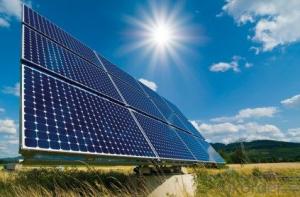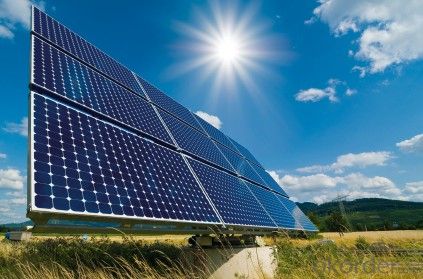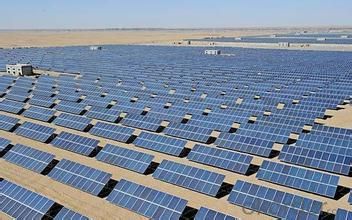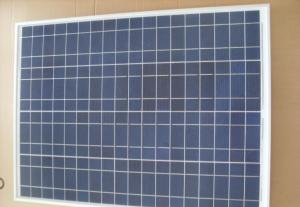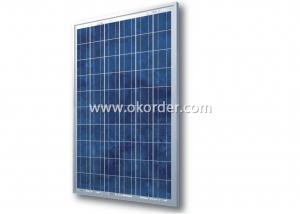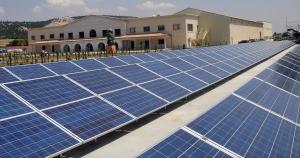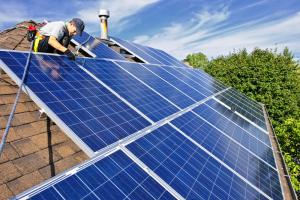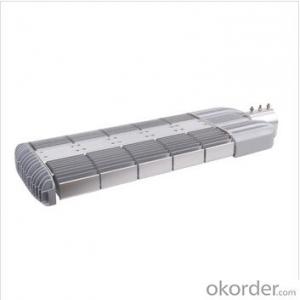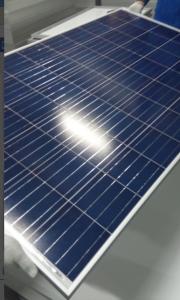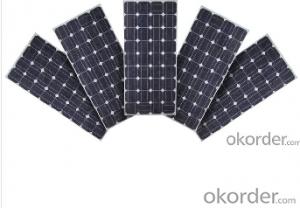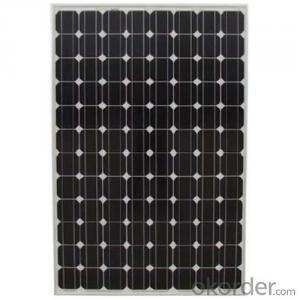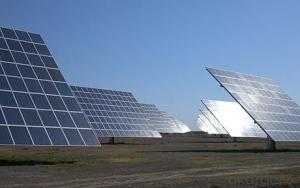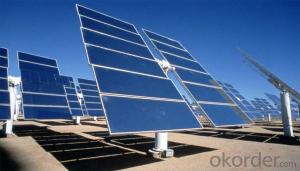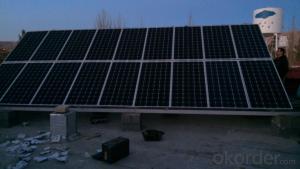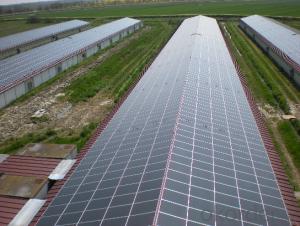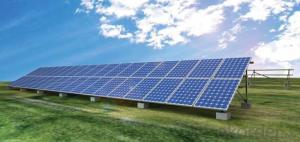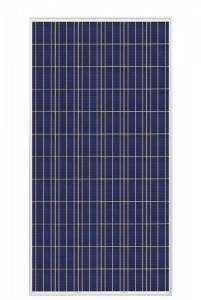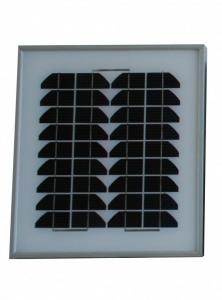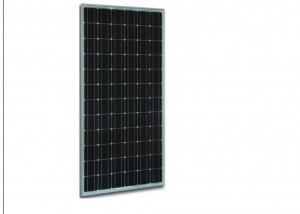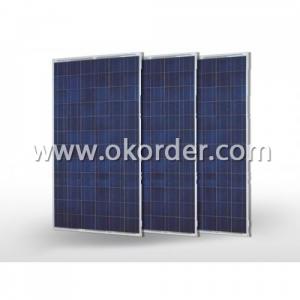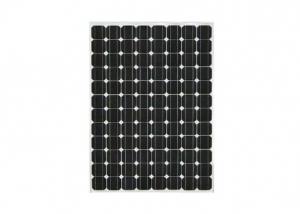Solaris Solar Panels - Solar Power Energy Industry Solutions
- Loading Port:
- Tianjin
- Payment Terms:
- TT OR LC
- Min Order Qty:
- 15000 pc
- Supply Capability:
- 15000 pc/month
OKorder Service Pledge
OKorder Financial Service
You Might Also Like
Specification
Product Description:
1. Structure of Polycrystalline Silicon Solar Panel Type CR290P-CR250P
Solar modules, which are widely used in ground mounted utility-scale PV plants, large-scale and small civil and commercial power generating system such as BIPV combined to the grid, roof-mounted PV power system, rural electrification, communications, emergency auxiliary power.
Solar PV module is comprised of some solar cells which are connected in serial with high efficiency and enhanced reliability.
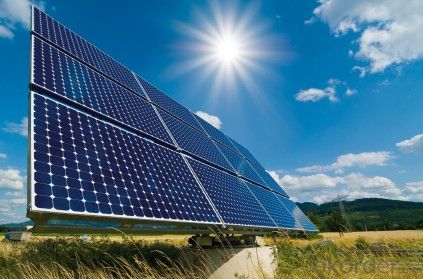
PERFORMANCE
- High effi ciency, multicrystalline silicon solar cells with high transmission and textured glass deliver a module effi ciency of up to 16.0%,
minimizing installation costs and maximizing the kWh output of your system per unit area.
- Tight positive power tolerance of 0W to +5W ensures you receive modules at or above nameplate power and contributes to minimizing
module mismatch losses leading to improved system yield.
RELIABILITY
- Tests by independent laboratories prove that Solar modules:
Fully conform to certifi cation and regulatory standards.
Withstand wind loads of up to 2.4kPa and snow loads of up to 5.4kPa, confi rming mechanical stability.
Successfully endure ammonia and salt-mist exposure at the highest severity level, ensuring their performance in adverse conditions.
- Q: Are there any maintenance requirements for solar panels?
- Yes, solar panels do require some maintenance. Regular cleaning of the panels to remove dirt, dust, and debris is recommended to ensure optimal performance. Additionally, it is important to inspect the panels for any signs of damage or wear, and if necessary, have them repaired or replaced. Monitoring the system's performance and checking the connections regularly is also crucial for identifying any issues.
- Q: Can solar panels be used for powering water treatment plants?
- Yes, solar panels can be used for powering water treatment plants. Solar energy can be harnessed and converted into electricity to operate the various processes involved in water treatment, such as filtration, disinfection, and pumping. This renewable energy source can help reduce reliance on fossil fuels, lower operational costs, and contribute to a more sustainable and environmentally-friendly water treatment process.
- Q: I'm looking to mount a solar panel to the top of my 2003 Pontiac Montana and was wondering how i could do it without any screws? Magnets maybe?
- In whichever car I'm not using much, I plug in a small solar panel to the cigar lighter socket, and simply place it up on the dashboard. So long as it gets daylight, it's working, it doesn't need full, direct sun. I just slip it between the transmission-tunnel and passenger seat when I get in, and my cars start right on the first turn of the key. It only delivers a very low level of charge, but it's STILL a net-gain, rather than the battery slowly getting a little tired - even the clock in the car, and the armed alarm-system takes SOME current to run, but even the smallest of panels will sort this out for you.
- Q: How much candle lights is required to operate a 205 watt solar panel?
- The intensity of direct sun is about 0,000 foot-candles. It would not be practical to light that many standard candles and put them foot away from the panel, but you could supply that intensity with electric lighting. That's in fact how they establish the power ratings of a given panel; they have a rig that provides a standard test condition of sun.
- Q: i want to build a stationary model of a solar panel and i dont know if it is going to be too simple or not i also want ideas to make it betterplease criticism is allowedmy idea was to make a case, just like a real solar panel, and take plexiglass to make it. i want to add some models of photovoltaic cells that look like they are in a solar panel . i want to add the fake shoulderings as well . i want to make the case openable by hinges.i would like some of your thoughts and ideas to help me .thx
- Build okorder /
- Q: Can solar panels be installed on airports?
- Yes, solar panels can be installed on airports. In fact, many airports around the world have already adopted solar energy systems to power their operations and reduce their carbon footprint. Solar panels can be installed on the roofs of airport buildings, canopies in parking lots, or even on open land surrounding the airport. They provide a sustainable source of clean energy and contribute to the overall sustainability efforts of the aviation industry.
- Q: How do solar panels affect roof ventilation?
- Solar panels can have both positive and negative effects on roof ventilation. On one hand, solar panels can provide shade to the roof, reducing heat gain and potentially improving the overall ventilation of the roof space. On the other hand, solar panels can obstruct airflow and create a barrier that hinders natural ventilation. Proper installation and design considerations are crucial to ensure that solar panels do not negatively impact roof ventilation.
- Q: I need to write a pressuasive essay on why we should use solar panels more than we do. and convince people that their good and stuff.. if u guys could give me some good key reasons why..that would be great.
- Right now, the U.S. government and some state governments (like California) are offering subsidies on solar panels for businesses and houses. With these subsidies, anyone infesting in solar power today will have their investment returned in less than 0 years. This means that with these subsidies, solar panels are basically paying for themselves; they're free. In addition, excess power generated on solar panels can be added to the local power grid and, if you're lucky and can set it up with your local power distributor, the power company will pay you for the power you generate. This are just financial reasons. Their is also the reduction of power generated by fossil fuels when using solar power which mitigates climate change.
- Q: Can solar panels be used to power a construction site?
- Yes, solar panels can be used to power a construction site. They can provide a clean and renewable source of energy to run the equipment and machinery needed for construction activities. By utilizing solar power, construction sites can reduce their reliance on fossil fuels and lower their carbon footprint.
- Q: I have a question about solar panels. What are the benefits of this system if I installed in my home. for example i know it produces electricity but does it do anything else? How many panel would you guys think I would need for 2000 sq ft. do you know if it produces hot water? Thanks for your help
- 30 years ago when the Hippies shut down our clean Nuclear plants They promised a clean miracle. No such thing! I'm sad to say at best Solar will only provide a fraction of our energy needs. (I guess if one abuses enough drugs they'll think up anything?) I am an apprentice for a Electric foreman; we calculate $50,000.00 in panels will meet the needs of a k foot house. So you would need a hundred grand. You'd save 00 dollers a month in electricity, but you'd be paying ,000 a month to pay off your loan of 00,000.00 in panels. God Bless You indeed a nice thought if it was practical.
Send your message to us
Solaris Solar Panels - Solar Power Energy Industry Solutions
- Loading Port:
- Tianjin
- Payment Terms:
- TT OR LC
- Min Order Qty:
- 15000 pc
- Supply Capability:
- 15000 pc/month
OKorder Service Pledge
OKorder Financial Service
Similar products
Hot products
Hot Searches
Related keywords
